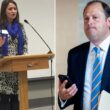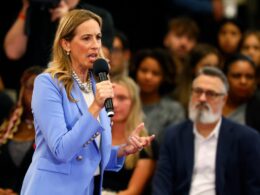As backpacks unzip and classrooms reopen, New York City students are returning to school riding a wave of historic gains in reading and math, which is no accident, as dedicated educators are leading high-quality instruction efforts through the city’s NYC Reads and NYC Solves initiatives.
This summer’s headlines told the story. Students showing proficiency on state tests jumped seven points in reading and three in math — a historic and nationally significant leap. Increases in third and fifth-grade reading were particularly staggering: 13 and 15 points. And, these results were just the latest evidence supporting a case already being built.
Local screener data revealed 2.5-point gains in reading, especially among our youngest learners and students with disabilities, while educator surveys from last school year confirmed growing confidence in the curriculum and strong support for these shifts.
Yet, one more pivotal and urgent test looms this coming school year. It’s whether the city’s leaders, especially with a mayoral election on the horizon, have the vision and leadership to sustain and expand this progress.
Building on NYC Reads and NYC Solves must be treated as non-negotiable, not just by parents, students, and educators, but by every New Yorker invested in the city’s future.
What happens next will decide if we close achievement gaps or allow them to widen, if years of advocacy and millions in public investment are leveraged or lost, and if New York City has the political will to follow through on meaningful change, especially for Black and Latino students.
Before these initiatives, two-thirds of Black and Latino students weren’t proficient in reading or math. Classrooms lacked standard instructional materials, leaving many teachers to cobble together lessons from outdated, low-quality resources and local districts unable to run centralized professional learning.
The old decentralized, free-for-all approach didn’t work then, and it won’t work now. The research is clear: student achievement rises when schools adopt high-quality curricula paired with sustained, aligned professional learning. States like Mississippi, Tennessee, and North Carolina have proven this model works, and New York is proving it too.
So what should city leaders do? First, strengthen the initiatives by acting on educator feedback to improve implementation, especially through professional learning that meets diverse student needs. Next, sustain them by baselining funding so progress can’t be undone on a whim. Finally, expand them so all students, in every grade, share in the gains underway.
Some may argue these shifts undermine teacher autonomy. But when educator feedback is leveraged as part of the process – as it has been to date with the rollout of new pacing guidance and expansion to more grade levels — it does the opposite. It empowers educators.
The curriculum provides a shared foundation for what to teach while preserving the freedom for educators to bring their strategies, creativity, and deep knowledge of their students. True equity requires a coherent, teacher-led approach backed by high-quality tools and professional development, not leaving teachers isolated without the resources and tools to do their job.
Others may champion literacy while downplaying math. That’s a mistake. Math underpins everyday skills — budgeting, cooking, making sense of statistics and what they tell us about the world — while driving career readiness in science, technology, and engineering. Research shows middle school math proficiency is a gateway to advanced coursework, graduation, college enrollment, and higher earnings. The national erosion of math skills could cost hundreds of billions in future earnings.
And for those who try to dismiss the gains made thus far as the product of unrelated factors, look closer. Schools with earlier, sustained implementation saw the biggest jumps. Educator confidence grows the longer they use the programs. The alignment of research, on-the-ground experience, and student results makes it clear: NYC Reads and NYC Solves are driving this progress.
Anything short of building on these initiatives wouldn’t just be a political misstep. It would be a serious betrayal of the city’s students and its future. The research, educator surveys, data points, and test results all indicate progress.
But now comes the real test: whether current and future leaders have the conviction to double down on what’s working and the leadership to take it further. As the new school year approaches, it’s a test New York City cannot afford to fail.
Divanne is the executive director of Educators for Excellence–New York.








